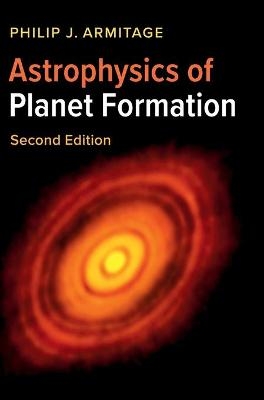
Astrophysics of Planet Formation
Seiten
2020
|
2nd Revised edition
Cambridge University Press (Verlag)
978-1-108-42050-1 (ISBN)
Cambridge University Press (Verlag)
978-1-108-42050-1 (ISBN)
This self-contained textbook is a graduate-level introduction to the physical processes that shape planetary systems, covering all stages of planet formation. The new edition has been updated and expanded to include new observational results and insights, theoretical developments, and an in-depth discussion of the leading planet formation models.
Concise and self-contained, this textbook gives a graduate-level introduction to the physical processes that shape planetary systems, covering all stages of planet formation. Writing for readers with undergraduate backgrounds in physics, astronomy, and planetary science, Armitage begins with a description of the structure and evolution of protoplanetary disks, moves on to the formation of planetesimals, rocky, and giant planets, and concludes by describing the gravitational and gas dynamical evolution of planetary systems. He provides a self-contained account of the modern theory of planet formation and, for more advanced readers, carefully selected references to the research literature, noting areas where research is ongoing. The second edition has been thoroughly revised to include observational results from NASA's Kepler mission, ALMA observations and the JUNO mission to Jupiter, new theoretical ideas including pebble accretion, and an up-to-date understanding in areas such as disk evolution and planet migration.
Concise and self-contained, this textbook gives a graduate-level introduction to the physical processes that shape planetary systems, covering all stages of planet formation. Writing for readers with undergraduate backgrounds in physics, astronomy, and planetary science, Armitage begins with a description of the structure and evolution of protoplanetary disks, moves on to the formation of planetesimals, rocky, and giant planets, and concludes by describing the gravitational and gas dynamical evolution of planetary systems. He provides a self-contained account of the modern theory of planet formation and, for more advanced readers, carefully selected references to the research literature, noting areas where research is ongoing. The second edition has been thoroughly revised to include observational results from NASA's Kepler mission, ALMA observations and the JUNO mission to Jupiter, new theoretical ideas including pebble accretion, and an up-to-date understanding in areas such as disk evolution and planet migration.
Philip J. Armitage is a professor in the Department of Physics and Astronomy at Stony Brook University, State University of New York and he leads the planet formation group at New York's Center for Computational Astrophysics. He teaches classes on planet formation to advanced undergraduate and graduate students, and has lectured on the topic at summer schools worldwide.
Preface; 1. Observations of planetary systems; 2. Protoplanetary disk structure; 3. Protoplanetary disk evolution; 4. Planetesimal formation; 5. Terrestrial planet formation; 6. Giant planet formation; 7. Early evolution of planetary systems; Appendix 1: physical and astronomical constants; Appendix 2: N-body methods; References; Index.
| Erscheinungsdatum | 30.01.2020 |
|---|---|
| Zusatzinfo | Worked examples or Exercises; 102 Line drawings, black and white |
| Verlagsort | Cambridge |
| Sprache | englisch |
| Maße | 179 x 253 mm |
| Gewicht | 820 g |
| Themenwelt | Naturwissenschaften ► Geowissenschaften ► Geophysik |
| Naturwissenschaften ► Physik / Astronomie ► Astronomie / Astrophysik | |
| ISBN-10 | 1-108-42050-8 / 1108420508 |
| ISBN-13 | 978-1-108-42050-1 / 9781108420501 |
| Zustand | Neuware |
| Haben Sie eine Frage zum Produkt? |
Mehr entdecken
aus dem Bereich
aus dem Bereich
How Numerical Models Revealed the Secrets of Climate Change
Buch | Hardcover (2020)
Princeton University Press (Verlag)
CHF 59,95


